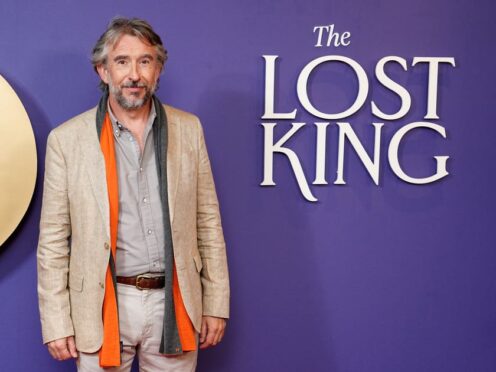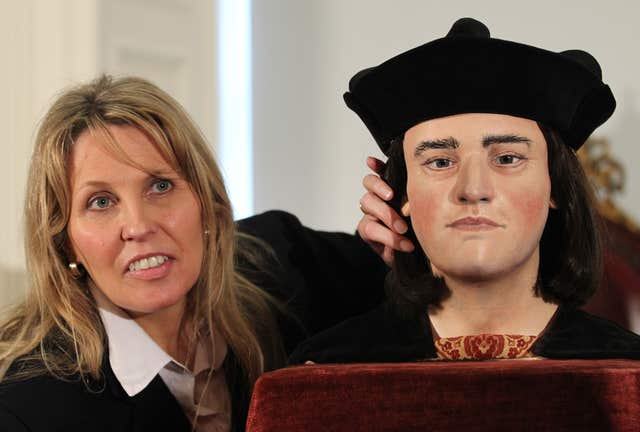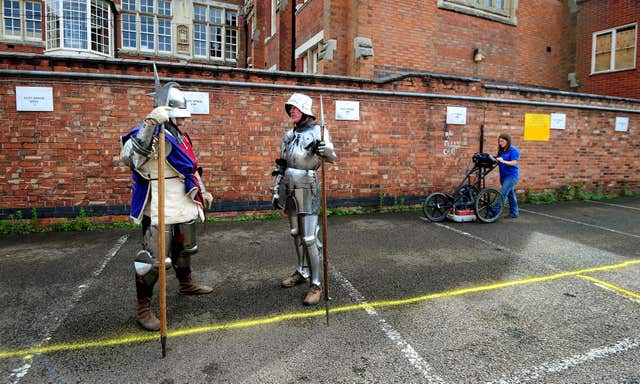
Steve Coogan is being sued for libel by a university official over his “devious” and “weasel-like” portrayal in a film about the discovery of Richard III’s remains, the High Court has heard.
Mr Coogan was a writer and producer of the The Lost King, which follows Phillipa Langley and her search to find the controversial king’s skeleton.
The lost remains of the Plantagenet king were found in a Leicester car park in 2012, more than 500 years after his death.
Richard Taylor, formerly deputy registrar of the University of Leicester, is bringing legal action against Mr Coogan, his production company Baby Cow, and Pathe Productions over his portrayal in the film.
At a hearing on Thursday, which Mr Coogan did not attend, William Bennett KC said his client Mr Taylor was presented as being “dismissive, patronising and misogynistic” towards Ms Langley.
The barrister said in written submissions: “The relevant context is the ‘good versus bad’ narrative, which runs through the film.
“Ms Langley is portrayed as the gutsy underdog heroine struggling against opposition and the claimant as the arrogant villain.
“He not only takes steps to make sure that people do not know about her role but takes the credit, which was rightfully hers, for himself and the university.”

Mr Taylor, who is now chief operating officer at Loughborough University, was also shown as a “devious, weasel-like person” and a “suited bean-counter”, Mr Bennett told the High Court in London.
The barrister later said that Mr Taylor was portrayed as “mocking” Richard III’s disability and “linking physical deformity with wickedness or moral failings”.
Mr Bennett continued: “It’s a straightforward, plot-driven film where everything that is said and done matters.”
Mr Coogan and the two production companies are defending the libel claim.
Andrew Caldecott KC, for the Alan Partridge star and companies, said in written submissions: “It is a feature film, not a documentary.
“It would be clear to the ordinary reasonable viewer that the film is not a documentary, it is a dramatisation of events.
“The concept of fictional films based on real events is not a new one.”
Mr Caldecott said the film states it was “based on a true story”, adding: “It is not a literal portrayal of exact words…. and would be understood as putting forward Ms Langley’s perception.”

The barrister denied that Mr Taylor is shown to be sexist or misogynist, adding his “concern is about Ms Langley’s amateur status and lack of historical expertise, and not her gender”.
He continued: “Whilst the film is clearly strongly critical of Mr Taylor and the university for sidelining Ms Langley at the dig and after the discovery of the body and not giving her sufficient credit, his clear motive is to exploit the discovery to further the university’s commercial interests.
“No reasonable viewer would conclude that his motive was sexism or misogynism.”
Mr Caldecott also said Mr Taylor was not portrayed as mocking Richard III’s disability, “and certainly not mocking disabled people in general”.
Judge Jaron Lewis will give a ruling on preliminary issues in the claim at a later date.

Enjoy the convenience of having The Sunday Post delivered as a digital ePaper straight to your smartphone, tablet or computer.
Subscribe for only £5.49 a month and enjoy all the benefits of the printed paper as a digital replica.
Subscribe